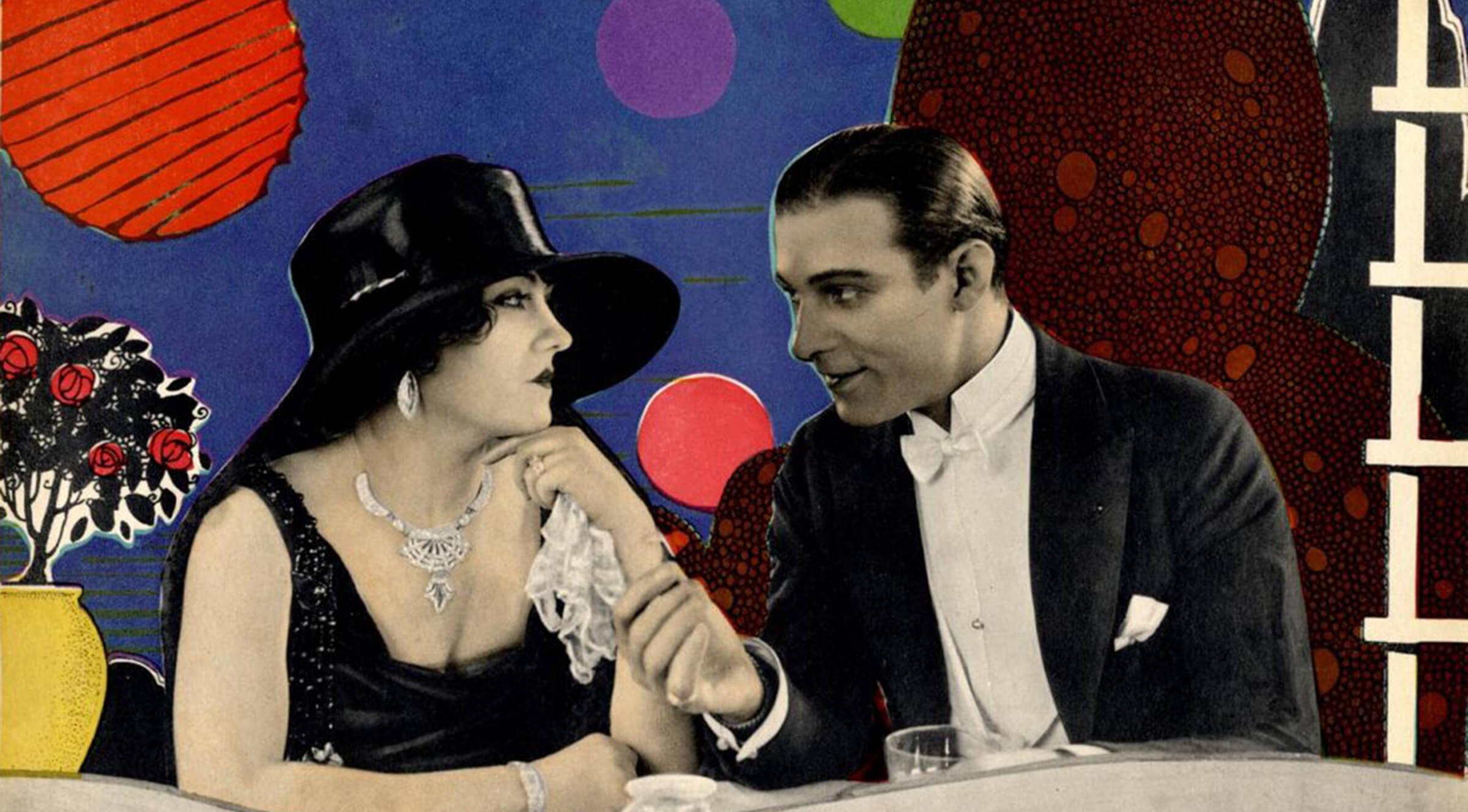In 1922, Gloria Swanson and Rudolph Valentino were two of the biggest movie stars in the world. Both were under contract to Paramount, and their first film together was highly anticipated, especially since it was to be based on a novel by the reigning queen of romance novelists, Elinor Glyn. Beyond the Rocks was the only film Swanson and Valentino made together.
Barely out of her teens, Swanson had become a movie queen in a series of sophisticated dramas and comedies directed by Cecil B. DeMille. But DeMille was the only star allowed on a DeMille film, so after six films together, it was time for Swanson to move on. Beginning in 1921, she made several glamorous melodramas directed by Sam Wood, who had been DeMille’s first assistant director. The first of these was The Great Moment, based on an original story by Glyn, who, after nearly two decades of writing successful novels in her native England, had taken her talent for self-promotion to Hollywood.
Valentino was an Italian immigrant who had been playing heavies and seducers because of his dark good looks. In 1920, he came to the attention of Metro Pictures screenwriter June Mathis, who was preparing a screen version of Vicente Blasco Ibañez’s novel The Four Horsemen of the Apocalypse (1921). Cast as a romantic Argentine playboy, Valentino was a sensation. During production of his next film, Camille (1921), Valentino fell in love with costume designer Natacha Rambova. At Rambova’s urging, Valentino demanded more money and more autonomy regarding his roles and scripts. When Metro refused, he moved to Famous Players-Lasky, which soon became Paramount. His first film at his new studio was The Sheik (1921), a bit of romantic nonsense in which he played a seductive Arab. Women swooned, the song “The Sheik of Araby” became a hit, and the word “sheik” became slang for an irresistibly attractive man. Glyn, Hollywood’s new authority on sex appeal (which she dubbed “IT”), told the press Valentino was the greatest lover on the silver screen.
Swanson had signed a new contract with Paramount in 1921, and studio head Jesse Lasky took a then unprecedented step of pairing his biggest star and newest star in Beyond the Rocks. At the time, the custom was to surround stars with lesser players, but Lasky wanted to keep the restless Swanson happy, so he gave her the most dynamic and popular leading man she’d had since she left DeMille. In her autobiography, Swanson recalled the filming of Beyond the Rocks as carefree and enjoyable, particularly the scenes shot near Catalina Island. “We had long, wonderful dinners, and frequently afterward, pillow fights in the upstairs corridors. I never saw Rudolph Valentino so relaxed and happy.”
The production values for Beyond the Rocks were top-notch, as befit the status of its leading players. As usual, Swanson wore glamorous frocks and jewels. Valentino’s costumes were designed by Rambova, and both stars got a chance to wear period clothes in DeMille-inspired historical sequences. One critic called the film “gorgeously stupefying.” Grace Kingsley wrote in the Los Angeles Daily Times, “Valentino’s vogue, Elinor’s eros, and Gloria’s gowns, that’s the blessed triumvirate which seems to be entirely failure proof … Beyond the Rocks will not, I fear be beyond the rhetorical rocks of the critics. The story is commonplace and might have been written by any trotty two shoes of the scenario department.”
Five more Swanson-Wood films were released between September 1922 and September 1923, and Swanson grew increasingly dissatisfied. “Sam Wood was all right, but he was a real estate dealer at heart,” she recalled. “We had been grinding out pictures since The Great Moment and each one was worse than the last. The only things that changed were the number and length of the dresses I wore and the face of the leading man.” Finally, Swanson moved to New York, began choosing her own vehicles, and branching out into comedy. Her problems began when she left Paramount in 1926 and became an independent producer and culminated with the disastrous Queen Kelly (1928). After Swanson fired director Erich von Stroheim from that film, Sam Wood, who had remained on good terms with Swanson, worked on a treatment for a proposed reshoot of the film, which never happened. Swanson’s career slowed after the coming of sound, but she made a stunning, Oscar-nominated comeback in Sunset Boulevard (1950). Gloria Swanson, the ultimate star, died in 1983, at the age of 84.
Sam Wood settled into a career as a versatile craftsman who worked well with actors. In the 1930s, Wood made several very successful films at MGM, including the Marx Brothers favorite A Night at the Opera (1935) and Goodbye Mr. Chips (1939). In the late 1930s and 1940s, Wood directed eleven actors to Oscar-nominated performances, including Best Actress winner Ginger Rogers in Kitty Foyle (1940). Near the end of his life, Wood’s work was overshadowed by his political activism. He served as the president of the Motion Picture Alliance for the Preservation of American Ideals, supporting the House Un-American Activities Committee’s witch hunt for communists in the film industry. Wood died in 1949, at the age of 66.
Just days after the May premiere of Beyond the Rocks, Valentino, tired of waiting for his divorce from his first wife to be final, married Rambova in Mexico. On his return to Los Angeles, Valentino was charged with bigamy. The couple lived apart until Valentino’s divorce was final, then remarried. Valentino’s star burned white-hot with his next film, Blood and Sand (1922). But as the strong-willed Rambova began influencing her husband’s career, their choice of roles found less favor with the public. By 1925, Valentino’s marriage was over and his career was in serious trouble. He rebounded with The Eagle (1925) and The Son of the Sheik (1926) had just opened to excellent reviews when Valentino became ill and died suddenly. He was 31 years old.
Presented at SFSFF 2005 with live music by Dennis James on the Mighty Wurlitzer

